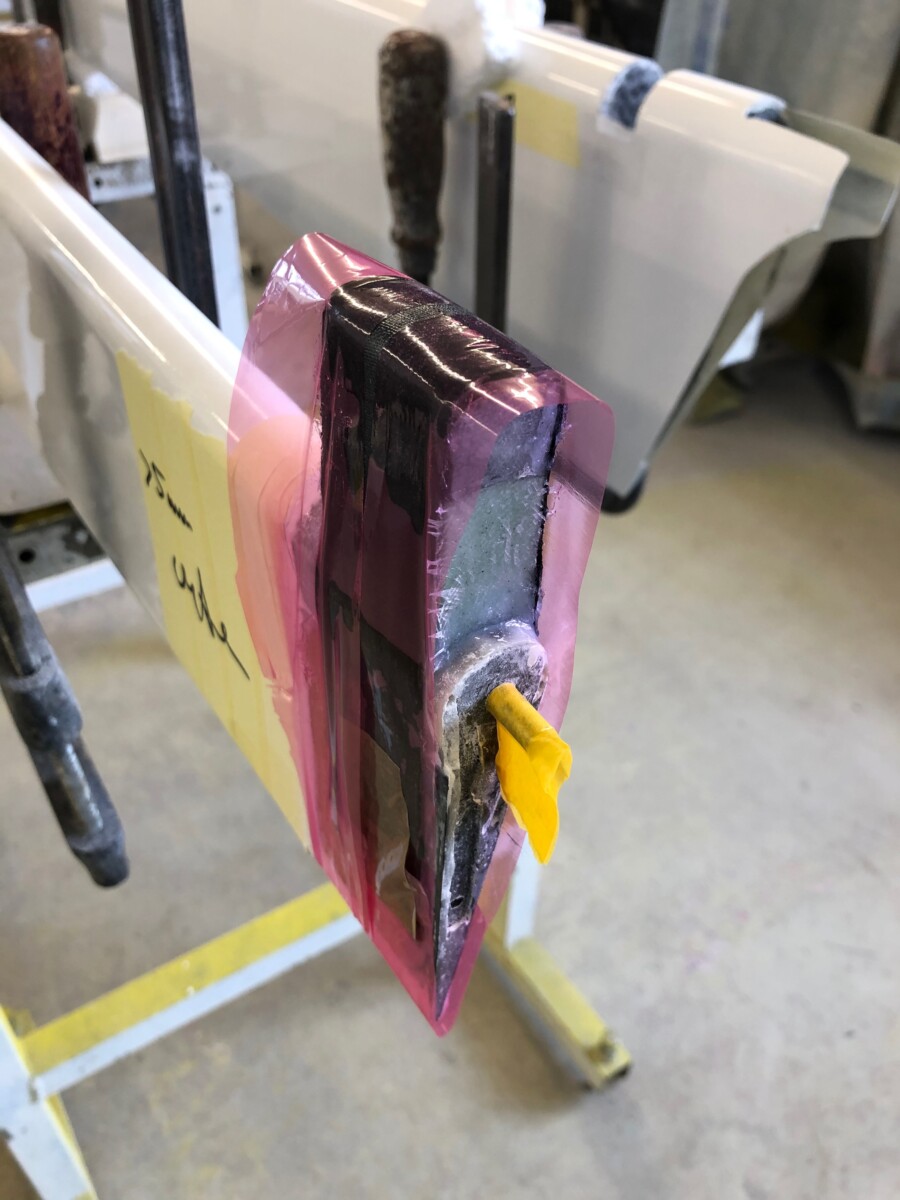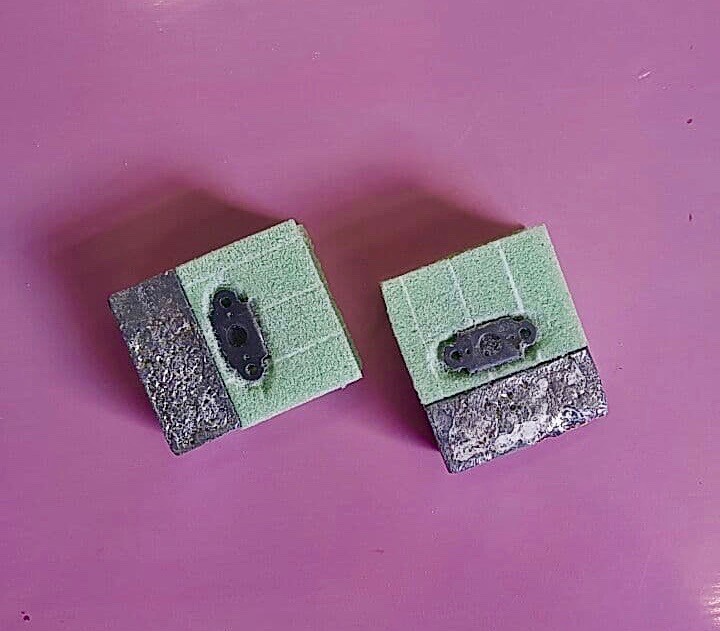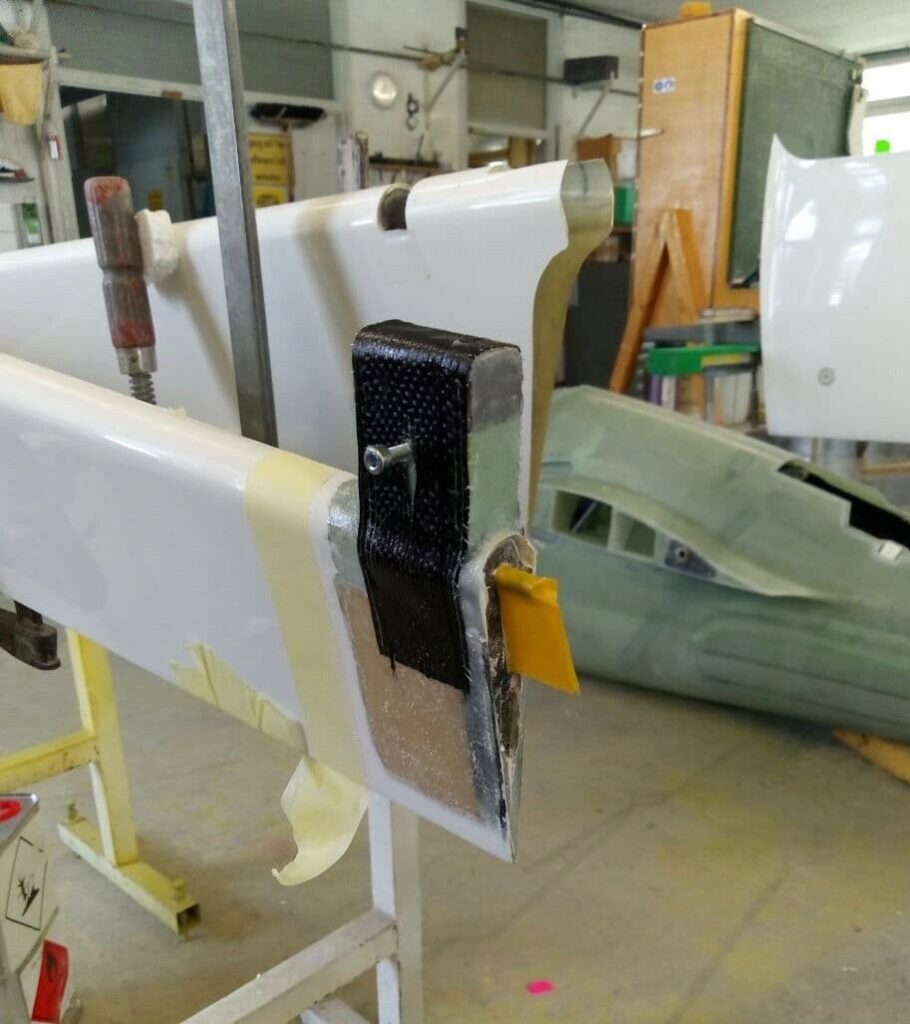
This winter we carried out the tailplane modification that had been planned since the first flight. This is necessary to prevent aerodynamic flutter in this region at high speeds and therefore to be able to increase the maximum permissible airspeed from the previous 180 km/h to 210 km/h and finally to 280 km/h after a successful static oscillation test. To this end, two mass balance weights were attached to the elevators.

The weights were cast from lead and glued to a milled piece of foam to give it the required lever arm. These were then wrapped in fibreglass and finally attached to the elevator with carbon fiber.

To allow for the elevators to fit in the tailplane, we had to modify the latter as well. First, we had to mill in a recess. Since this also removes the outer 50mm of the closing web, it had to be routed further inside around the recess. To do this, we removed the foam with the inner layer in the area. The inner layer was completed again and attached to the outer shell. Foam was glued to the designated position to better construct the new closing web. Then the carbon fiber fabric could be laminated, placed on top of the foam and attached to the shell.

The elevators on the fs35 are inserted in two halves from the inside, which is why the mass balancers consist of the weight permanently attached to the rudder and two removable covers each to complete the aerodynamic contour. These can only be bolted on after assembly, since the mass balancer must first be slid between the shell of the fin and then pushed into the recess with the rudder reflecting outward. Finally, all parts were filled and painted with polyurethane paint.
Now the fs35 can soon start flight testing again. We will first test the rebuilt tailplane and later also the newly built ailerons.

Author: Luisa Marx

